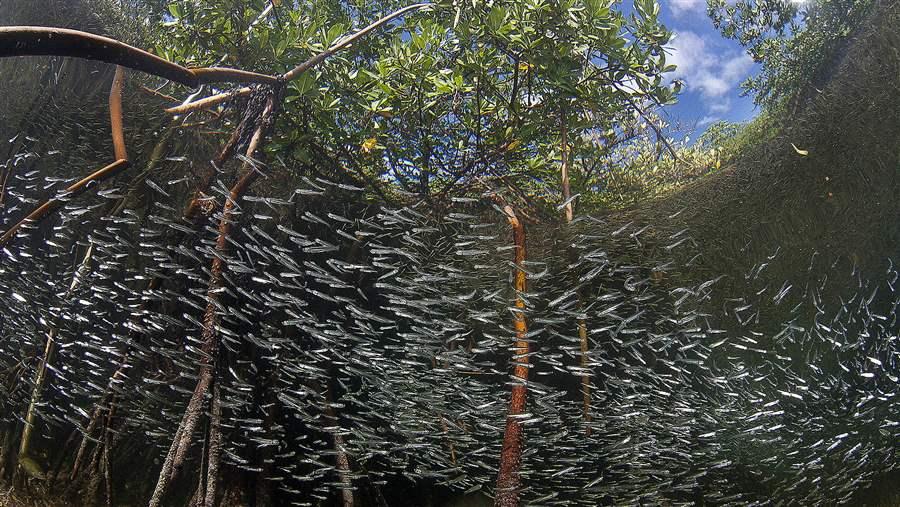Protecting the Prey

Forage fish hold Florida’s marine food webs together. They are a critical food source for fish and wildlife and make up nearly 20 percent of the commercial catch off Florida’s shores.
Few rules directly limit the amount of forage fish that can be taken from the water, yet worldwide demand for the species is skyrocketing. They are used as feed for fish farms and in products such as cosmetics and fertilizers.
Regulators should ensure sufficient abundance, variety, and sizes of forage species to meet the food needs of predators before expanding or limiting their fishing. Authorities also should protect forage fish habitats—such as mangroves, sea grasses, estuaries, rivers, and bays—including their water quantity and quality.
Failing to protect forage fish could cost jobs and revenue and hurt Florida’s legacy as the "Fishing Capital of the World."


Key to Healthy Fisheries May Lie in Viewing Them From the Bottom Up


For Answers on Florida's Little Fish, a Math Geek Dives Into Data


Florida Algae May Harm Where Fish Find Food


Anchovies Help Researcher Solve Ecosystem Mysteries
Additional Resources


Little Fish Are a Big Deal to Florida


This video is hosted by YouTube. In order to view it, you must consent to the use of “Marketing Cookies” by updating your preferences in the Cookie Settings link below. View on YouTube
This video is hosted by YouTube. In order to view it, you must consent to the use of “Marketing Cookies” by updating your preferences in the Cookie Settings link below. View on YouTube




